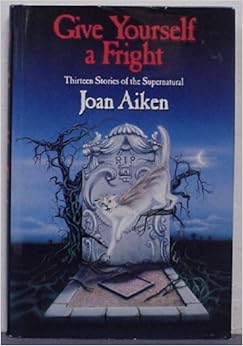It may not be February, but October is just as good a time (if not a better one) to recognize women in horror, especially women writers. Paula Cappa, author of the supernatural novels The Dazzling Darkness and Night Sea Journey (both reviewed here), gives us her take on women writers in the genre from the beginnings of their journey until the present day. Love quiet horror? Visit her blog to discover what classic story she’s presenting as her Tuesday Tale of Terror. Really. It’s awesome.
Want another take on women writers in the horror genre? Check out this post by Colleen Wanglund, which includes a fantastic list of contemporary women writers and recommended titles.
The Literary Ladies of Horror’s Haunted Mountain
By Paula Cappa
If there is ever a time to hear a night-shriek, it is October, a month that welcomes readers to the dark mountain of the horror genre. Listen to the hallowed voices, their devouring muscular growls and hot stinging hisses. Canadian writer Margaret Atwood, author of MaddAddam, says “Some may look skeptically at ‘horror’ as a subliterary genre, but in fact, horror is one of the most literary of all forms.”
The literary ladies at the summit are as ghoul-haunted as the gentlemen claiming Haunted Mountain as their territory with their persistent footprints and pulsing voices. Their names are familiar: Poe, Hoffman, James, Blackwood, LeFanu, Lovecraft, Stoker, King, Koontz, Herbert, Straub, Saul, Strieber, Bradbury, Barker, Campbell– the list goes on.
With women so under-represented, one would think the only woman writing horror in the early years was Mary Shelley, setting up ropes and spikes, blazing a wide path up horror’s haunted mountain with Frankenstein in 1818. But look closely at the mountain, and you’ll find the distinctive footprints of Ann Radcliffe, who tore open supernatural paths with The Mysteries of Udolpho as early as 1794. Radcliffe’s writing of suspense about castles and dark villains influenced Dumas, Scott, and Hugo. Mary Elizabeth Braddon, author of Eveline’s Visitant, wrote eighty novels and volumes of short stories during the 1800s, and was known as the Queen of Sensation. The little-known and much-overlooked Margaret Oliphant scaled the rocky mountainside with a heady ghost story, “The Secret Chamber.
By 1865, Amelia Edwards’ The Phantom Coach cut popular tracks across the haunted mountain. Helena Petrovna Blavatsky cleared the way for future women writers with her collection of nightmare tales, The Ensouled Violin, as did Elizabeth Gaskell with The Poor Clare, which deals with a family evil curse, complete with witches and ghosts. Charlotte Perkins Gilman’s short story “The Yellow Wallpaper”, written at the turn of the century, became the earliest feminist literature to expose 19th century attitudes against women’s mental health, in less than 6000 words. I like to think of Charlotte as the Wallerina, dancing up the haunted mountain.
Gothic writers like Edith Wharton (Afterward) and Mary Wilkins (Collected Ghost Stories) remain treasures. V.C. Andrews, Shirley Jackson, Daphne du Maurier, Mary Sinclair, Rosemary Timperley, Victoria Holt, Mary Stewart, Joan Aiken, Phyllis Whitney, and Barbara Michaels, all were prolific writers on horror’s haunted mountain during the 20th century, and some are still writing today. Then, of course, there’s Anne Rice, with her newest release The Wolves of MidWinter. This queen of the damned has practically established a private driveway up the haunted mountain, with more than thirty enormously successful novels of vampires, angels, demons, spirits, wolves, and witches.
Horror’s haunted mountain, traveled by women writers from Ann Radcliffe to Anne Rice, is still being trailblazed by fresh talents, writers of gothic, ghost, supernatural, traditional, and dark horror: Alexandra Sokoloff, The Unseen; Barbara Erskine, House of Echoes; Caitlin R. Kiernan, The Drowning Girl; Chesya Burke, Dark Faith; Elizabeth Massie, Hell Gate; Gemma Files, The Worm in Every Heart; Joyce Carol Oates, The Accursed; Kelley Armstrong, Bitten; Linda D. Addison, How to Recognize a Demon Has Become Your Friend; M.J. Rose, Seduction; Melanie Tem, Slain in the Spirit; Nancy Baker, Kiss of the Vampire; Nancy Holder, Dead in Winter; Poppy Z. Brite, Drawing Blood; Rose Earhart, Salem’s Ghost; Susan Hill, The Woman in Black; too many more to list.
What about the short story? Look to Billie Sue Mosiman, with 150 short stories to her credit. Her “Quiet Room” is about a ruthless evil killer, written in “quiet horror” fashion. For collections, try authors Kaaron Warren’s Dead Sea Fruit, Carole Lanham’s The Whisper Jar, and Fran Friel’s Mama’s Boy and Other Dark Tales.
Men may continue to dominate horror’s haunted mountain, just as women continue to be fierce climbers with hawkish voices. But story is story; writers are writers. What does gender matter in art? In the words of Virginia Woolf: “It is fatal for anyone who writes to think of their sex. It is fatal to be a man or woman pure and simple; one must be woman-manly or man-womanly.” Oh wait, I forgot one more ghostly title for you: Virginia Woolf’s A Haunted House.
Bio:
Paula Cappa is a published short story author, novelist, and freelance copy editor. Her short fiction has appeared in SmokeLong Quarterly, Every Day Fiction, Fiction365, Twilight Times Ezine, and in anthologies Human Writes Literary Journal, and Mystery Time. Cappa’s writing career began as a freelance journalist for newspapers in New York and Connecticut. Her debut novel Night Sea Journey, A Tale of the Supernatural launched in 2012. The Dazzling Darkness, her second novel, won the Gothic Readers Book Club Choice Award for outstanding fiction. She writes a weekly fiction blog about classic short stories, Reading Fiction,Tales of Terror, on her Web site http://paulacappa.wordpress.com/

) and subversively funny (such as the tales of Arabel and Mortimer, her raven) her writing for all three audiences often contained dark, Gothic, or supernatural elements.




Follow Us!